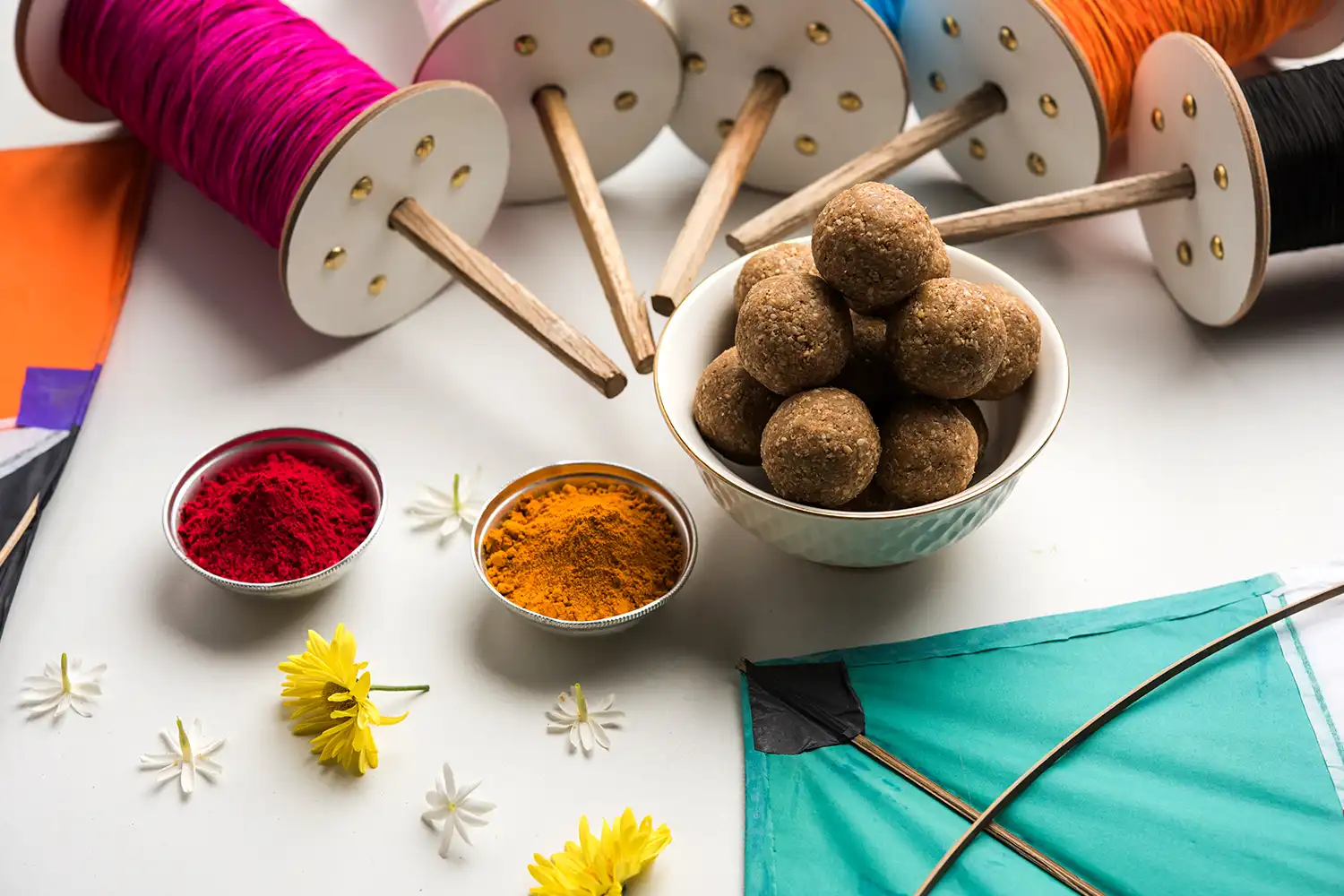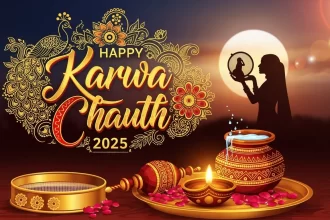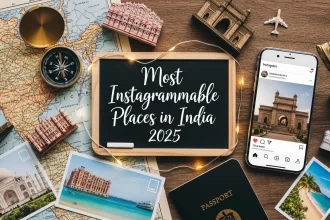Makar Sankranti is one of the major festivals celebrated across India. This festival, rich in its cultural and religious importance, is dedicated to the Sun God, representing the Sun moving into the zodiac sign of Capricorn or Makar; thus, the name “Makar Sankranti.” The festival has a different kind of cultural meanings and traditions when it is being celebrated in all parts of India. It is the last day of the winter solstice and the first day of longer days. This is the time when spring will be here, renewal will be there, and prosperity will be seen.
When is Makar Sankranti?
Makar Sankranti falls on 14th January of every year, but it sometimes comes a day in advance since it is ascertained with the movement of the Sun. It falls on the same day of the solar calendar every year, so it is one of the very few Indian festivals that are not on the lunar calendar. It is that time when the Sun is shifting from the zodiac sign Sagittarius into Capricorn and marks a critical moment in the Hindu solar calendar. The timing of the festival is very important because it marks the end of winter and the beginning of a new cycle of harvest and abundance.
Why Makar Sankranti is Celebrated?
Makar Sankranti is a very old festival deeply rooted in agricultural traditions, especially in the rural areas of India. It is a harvest festival. The festival is held to mark the end of the harvest season, which is then followed by offering thanks for all the crops and food produced throughout the year. All the farmers in the country celebrate this festival with a lot of zest and enthusiasm. They offer their prayers and say thanks for getting an abundant harvest. It’s also a new beginning and fresh start, as the Sun now starts moving upward.
In Hindu mythology, there are various stories and beliefs related to Makar Sankranti. The most famous legend relates the festival to the worship of the Sun God. The religiously inclined interpret that on the above day, Surya Raajah of the Sun Gods enters the house of Capricorn and here he begins the northward trend in his planetary travel, hence it is considered to be his “Uttarayan” time. For it is regarded as a day when the trajectory of the path of the sun is believed to be changing or concluding its cold period of winter into the warmer time that is equally longer. This period is believed to be spiritual rejuvenation and cleansing.
For most, Makar Sankranti also marks victory of light over darkness, good over evil and knowledge over ignorance.
Where is Makar Sankranti Celebrated?
Makar Sankranti is celebrated with much fervor and enthusiasm in the various regions of India, which gives it its different cultural touch. Regional variations in customs and rituals, foods make the festivities of the festival vibrant and diverse across the country. However, the basic significance of the festival remains the same everywhere.
In North India, Makar Sankranti is celebrated for kite flying, which goes on all the time in cities such as Jaipur, Ahmedabad, and Delhi. The Punjab and Haryana states celebrate “Lohri,” which sees people sitting by bonfires singing traditional songs and performing the Bhangra to hail the arrival of harvest time. People bathe in the holy rivers, such as Ganges in Uttar Pradesh to remove all evil both from their body and soul.
In Gujarat, the festival is marked by an explosion of colors as people fly kites and take part in the International Kite Festival held in Ahmedabad. The skies are filled with kites of all shapes and sizes, and the festival brings together people of all ages in a friendly competition to cut each other’s kites.
In Maharashtra, It is known as Sankranti in Maharashtra. This festival is celebrated with sesame seeds and jaggery sweets called tilgul. The meaning of this is that life has its own sweetness and unity and harmony are very essential. On this day, people also wear new clothes, visit friends and family, and attend cultural events.
In Tamil Nadu,Makar Sankranti in Tamil Nadu is “Pongal,” a four-day festival in the worship of the Sun God. This festival is the harbinger of the harvest season. This festival is very important in the culture of Tamilians, and its first day of the festival, called “Bhogi,” is performed through the burning of old things in order to accommodate new beginnings. The main is day is preparing the traditional dishes like jaggery pudding “Pongal,” which consists of rice, jaggery, and milk, people prepare to offer to the sun god.
The festival is also celebrated in Kerala and Karnataka in south India, wherein people pray and perform certain rituals and prepare sweet rice and kheer as well. Many seek the blessings of the god by visiting temples, and many participate in religious processions as well.
In Bengal, it is called “Poush Sankranti,” and people celebrate it by special rituals. Some parts of Bengal are involved with the traditional sweets known as “tilkut,” that are made with jaggery and sesame seeds.
In Odisha, it is called “Makara Mela.” Fairs are widely carried out with large scale and even the devotees take bath in the river. They visit the temple and worship the Sun God.
How is Makar Sankranti Celebrated?
The celebrations of Makar Sankranti are diverse but generally involve the following common activities across regions:
1.Kite Flying
One of the most common and enjoyed celebrations related to Makar Sankranti, especially in states like Gujarat, Rajasthan, and Uttar Pradesh is flying kites. The sky becomes full of rainbow-colored kites when people of all ages indulge in this festival competition. In Gujarat, the International Kite Festival in Ahmedabad attracts tourists as well as enthusiasts from all over the world.
2.Bonfires and Folk Dances
The bonfires are lit in open places to depict the warmth of the Sun and rejoice at the end of winter. Such bonfires also signify thanks to the fire god for the harvest. People even dance around the bonfire with Bhangha and Gidda and enjoy the festival songs and music.
3.Special Food Preparations
Makar Sankranti is also known for its specialty food items. In most parts of the region, sweets of sesame seeds (til) and jaggery (gur) are exchanged. Such sweets are said to represent sweetness in life and the need for maintaining harmony in relationships. Some of the most widely made sweets include “tilgul” in Maharashtra, “tilkut” in Bihar and Jharkhand, and “ellu bella” in Tamil Nadu.
4.Rituals and Worship
In many places, people pray to the Sun God and offer oblations. He is believed to bless them for a good harvest. devotees throng temples- particularly in Uttar Pradesh and Bihar- for holy dips in Ganges and Yamuna rivers. The day is considered sacred, and many people take part in rituals to seek the blessings of prosperity and good health.
5.Wearing New Clothes
For most, it’s the day when people wear new clothes, a reminder of new life because the Sun God is just starting his northward journey. People dress up in bright, cheerful colors, which are considered festive colors.
Significance of Makar Sankranti in Modern Times
Even today in the modern world, Makar Sankranti is highly revered in rural and urban areas. Transcending its cultural and religious importance, it brings home the importance of sustainability and integration between nature and human life. The festival embeds feelings of thanksgiving for harvests, unity, and community spirits that make this very important in the Indian cultural scenario.
This is also somewhat similar to the cycles of celestial rhythms guiding life on Earth, in the celebrations of changing seasons and the cycle of the natural world. Be it flying kites, dancing around bonfires, or sharing food, Makar Sankranti brings people together and lets them thank God for all the good things in life.







